A Private Wader Spectacular tour today. It was a lovely sunny day with light winds – it almost felt like the summer we never had! Beautiful weather to be out watching the flocks of waders.
We met up at Snettisham today. As we got out to the edge of the Wash, the Knot were already nervous and kept flying up and whirling round, making different shapes and patterns in the air. Each time, it was a false alarm though and they quickly settled back down again onto the mud. Spectacular!
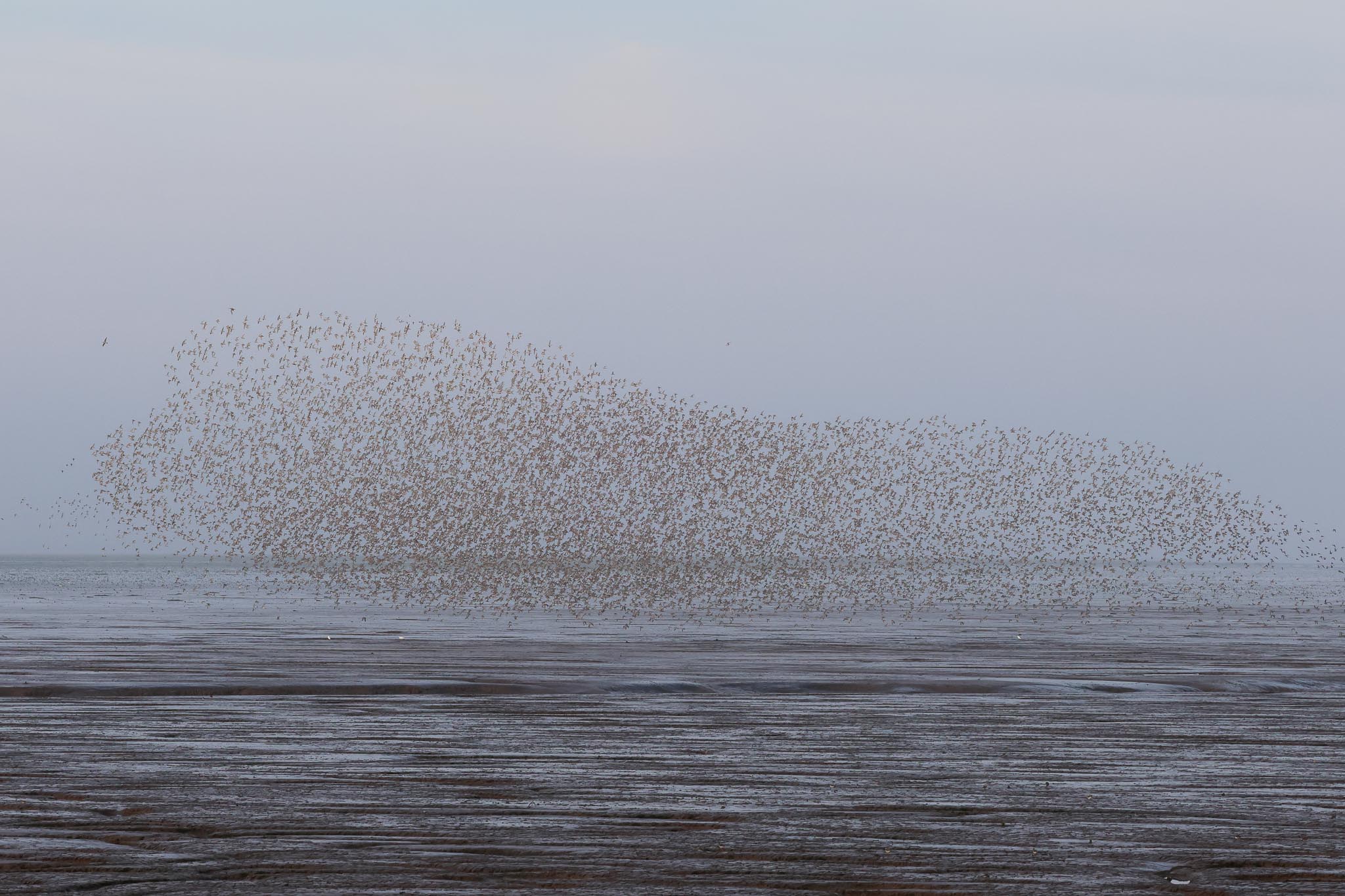
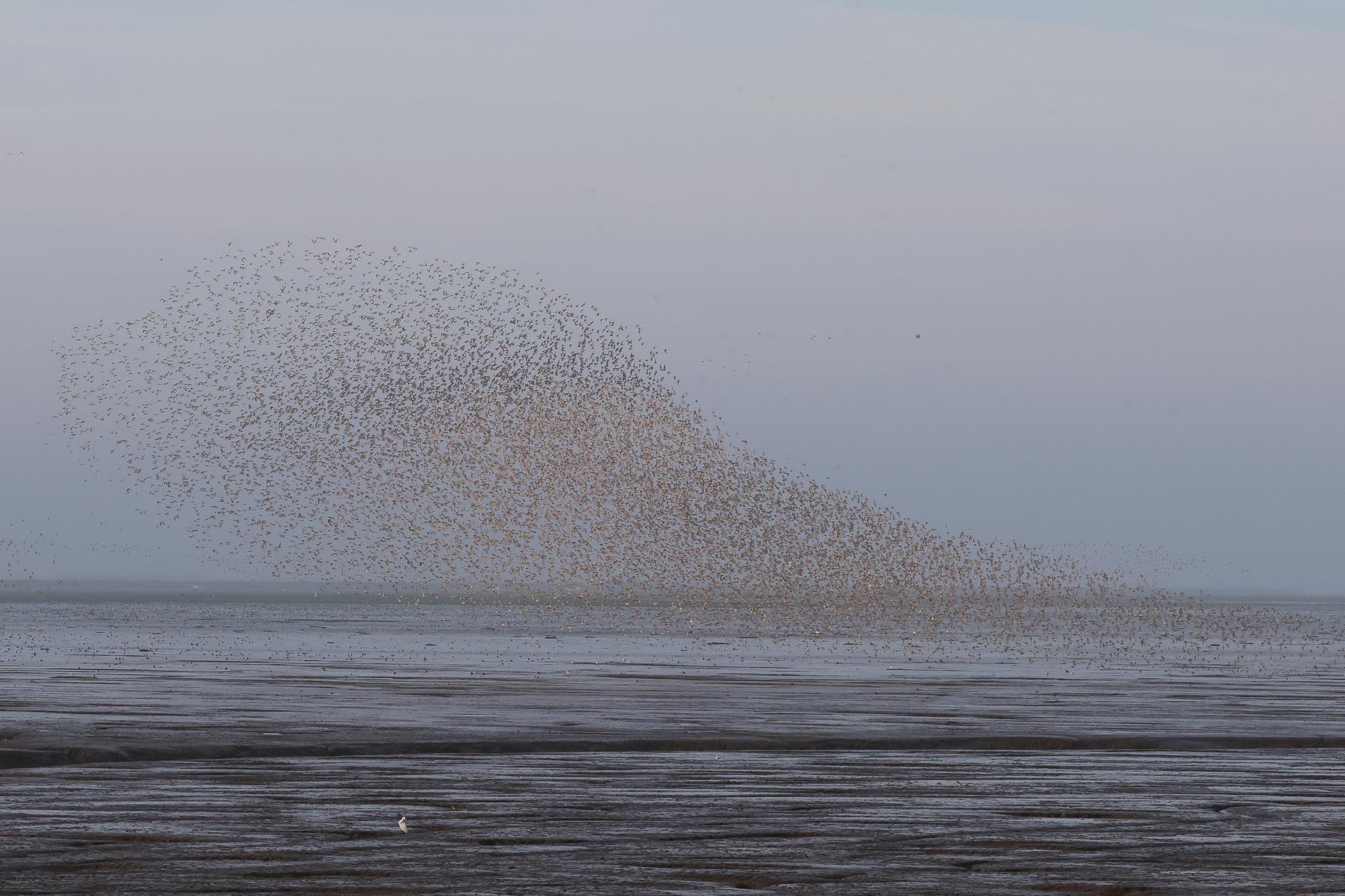
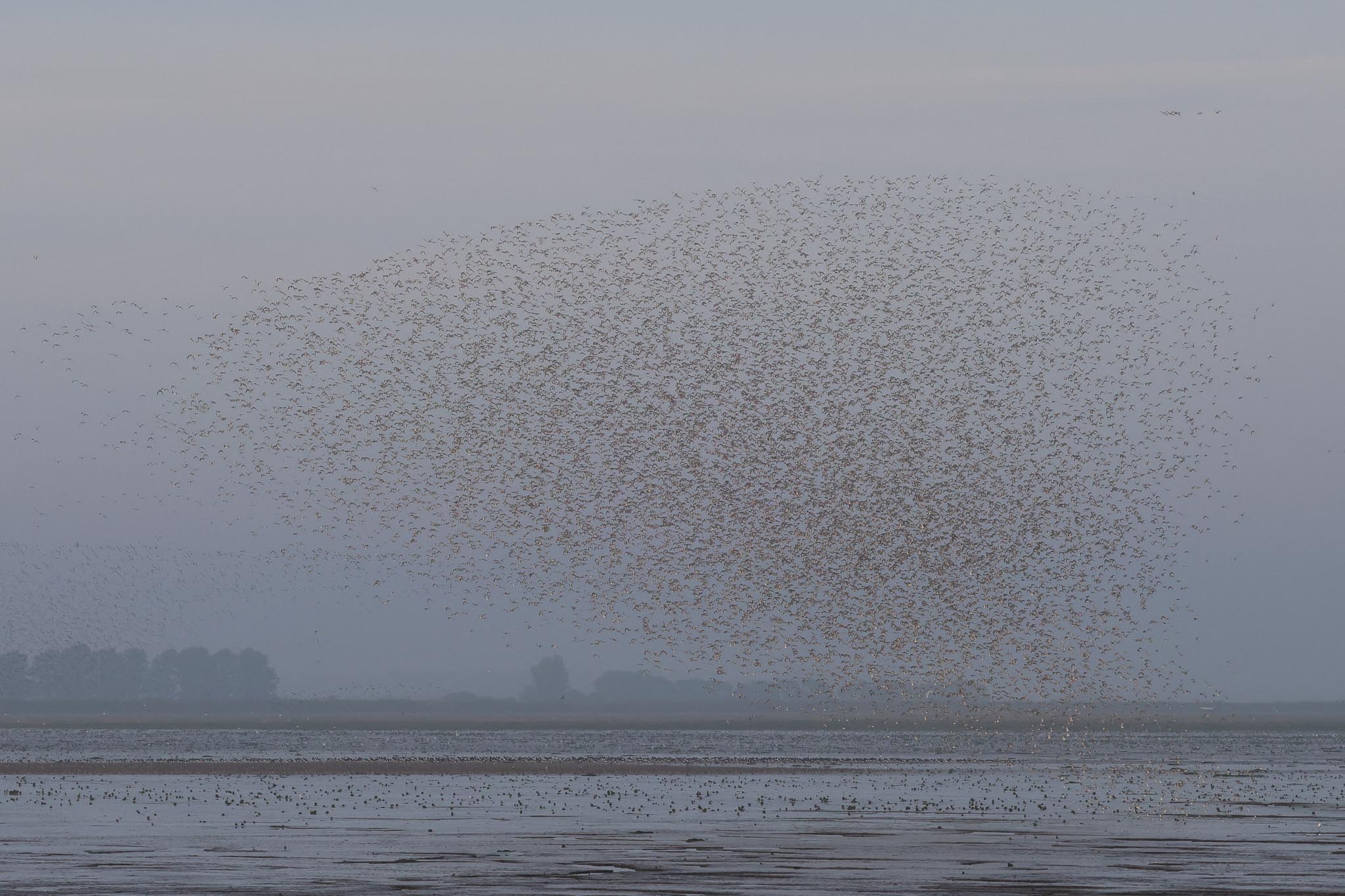

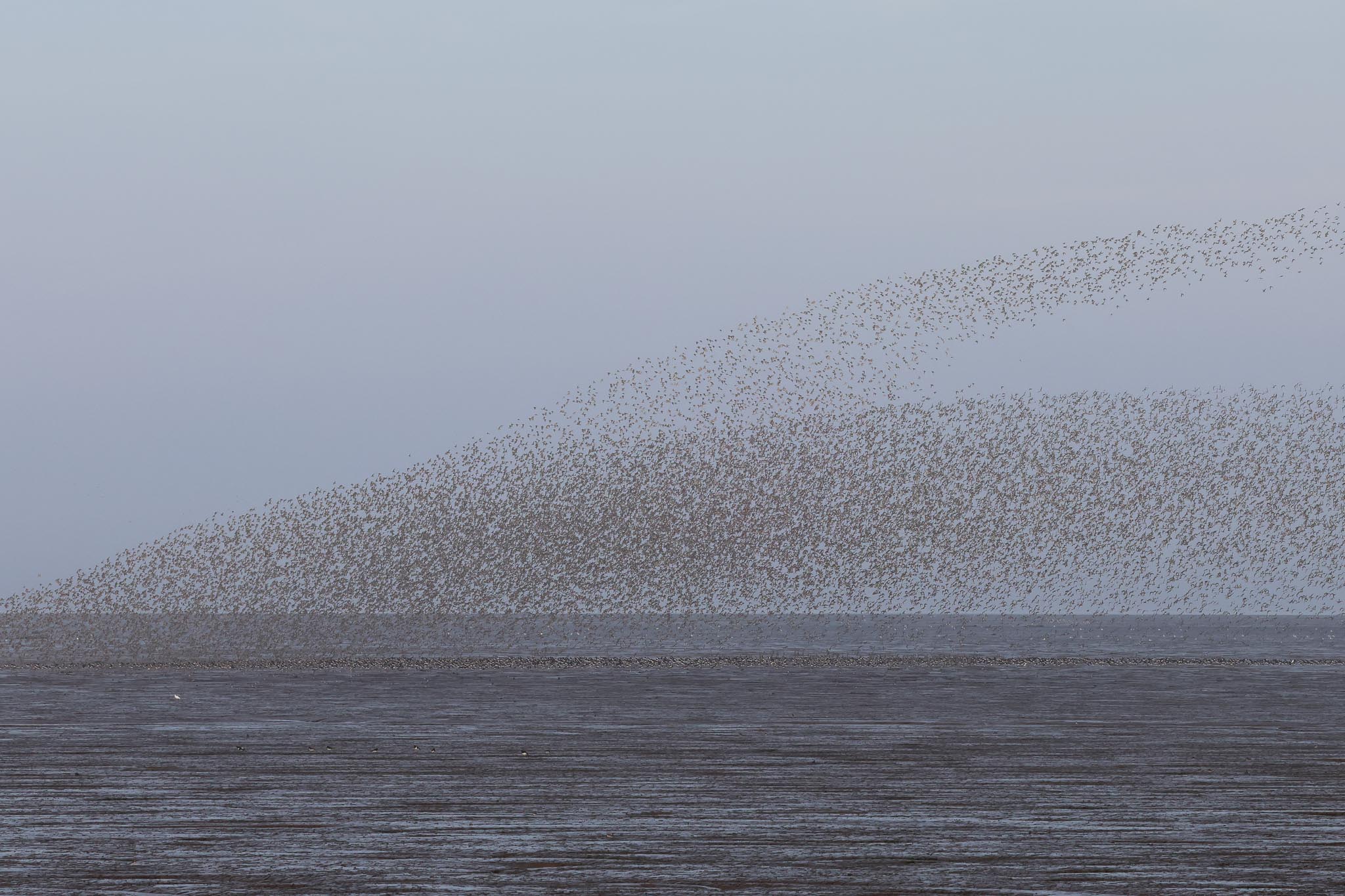
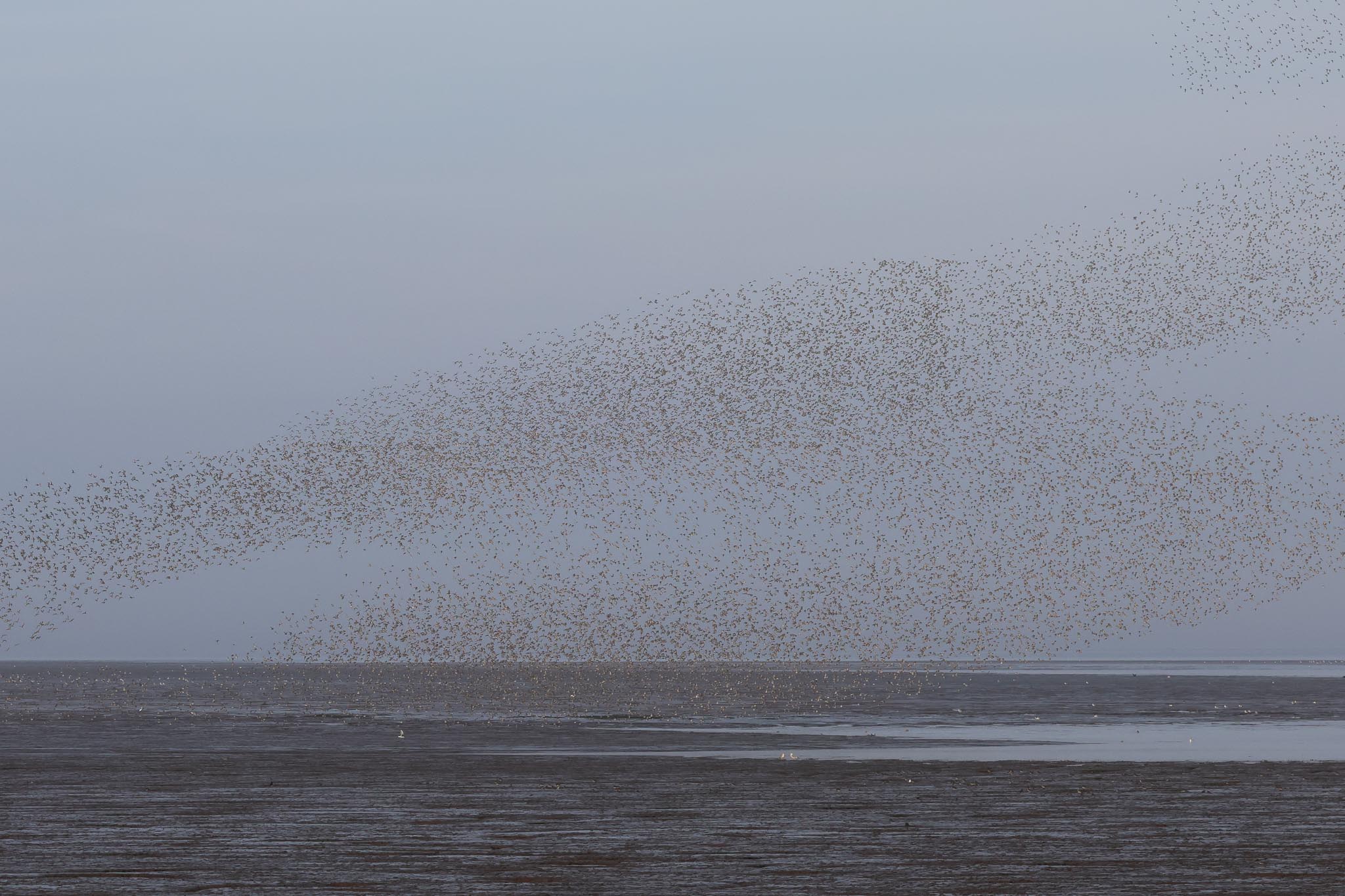
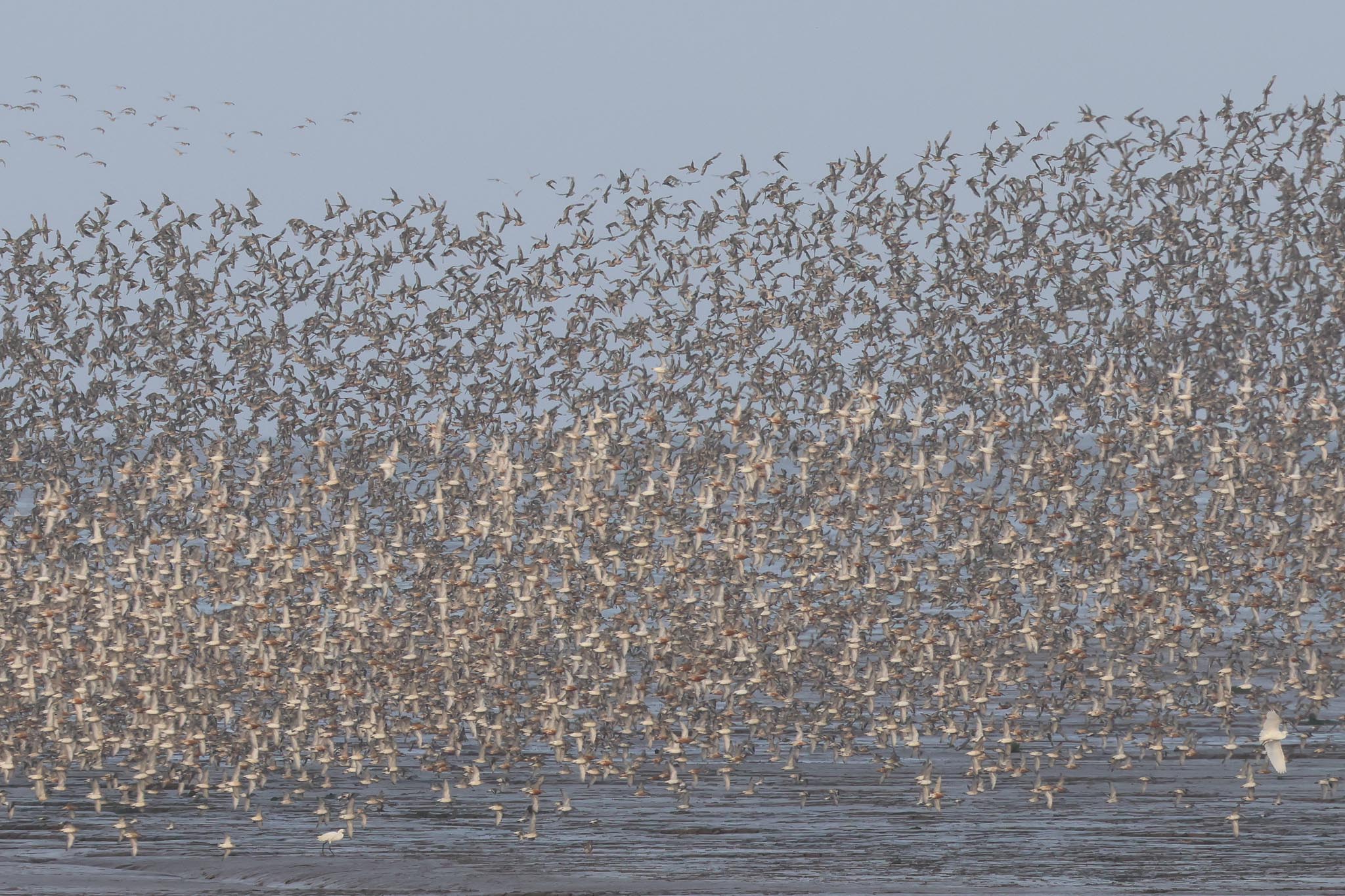
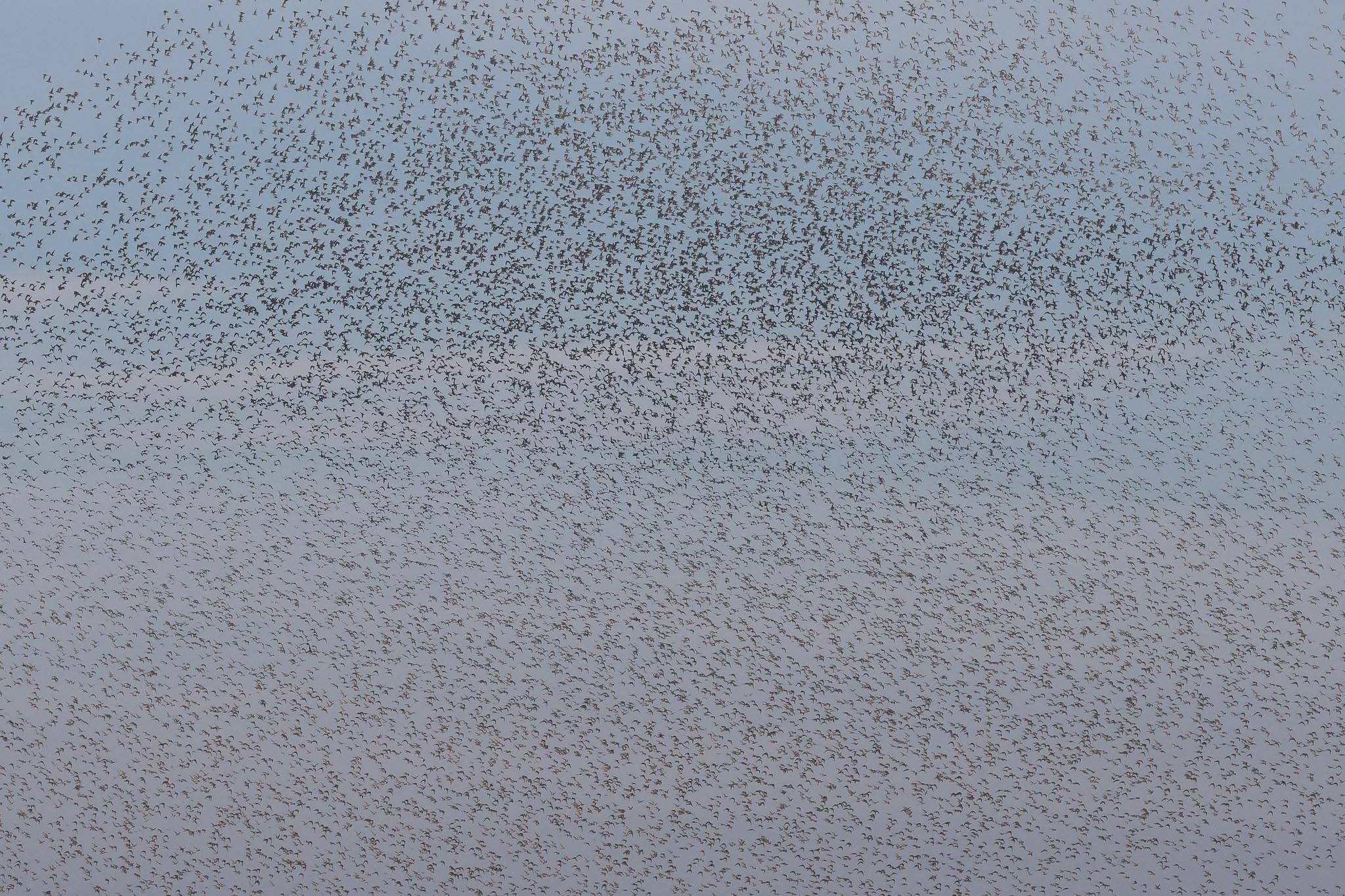
In between the displays from the Knot, we had a chance to look through all the small waders down at the front feeding on the mud ahead of the rapidly rising tide. In with the Ringed Plovers, Dunlin, Sanderling and Turnstones, we found at least three Curlew Sandpipers and a couple of Little Stints. A couple of Spotted Redshanks were hiding in a small pool on the other side of the channel. A Yellow Wagtail dropped in briefly right in front of us, with the Pied Wagtails and Meadow Pipits.
As we walked on down, we stopped to look at all the birds massed out on the edge of the water. Through the scope, we could see they were all walking away from the rising tide, Knot, Bar-tailed Godwits and lots of Oystercatchers, almost like they were flowing across the mud. The Oystercatchers then gradually started to take off and come in in waves, calling.
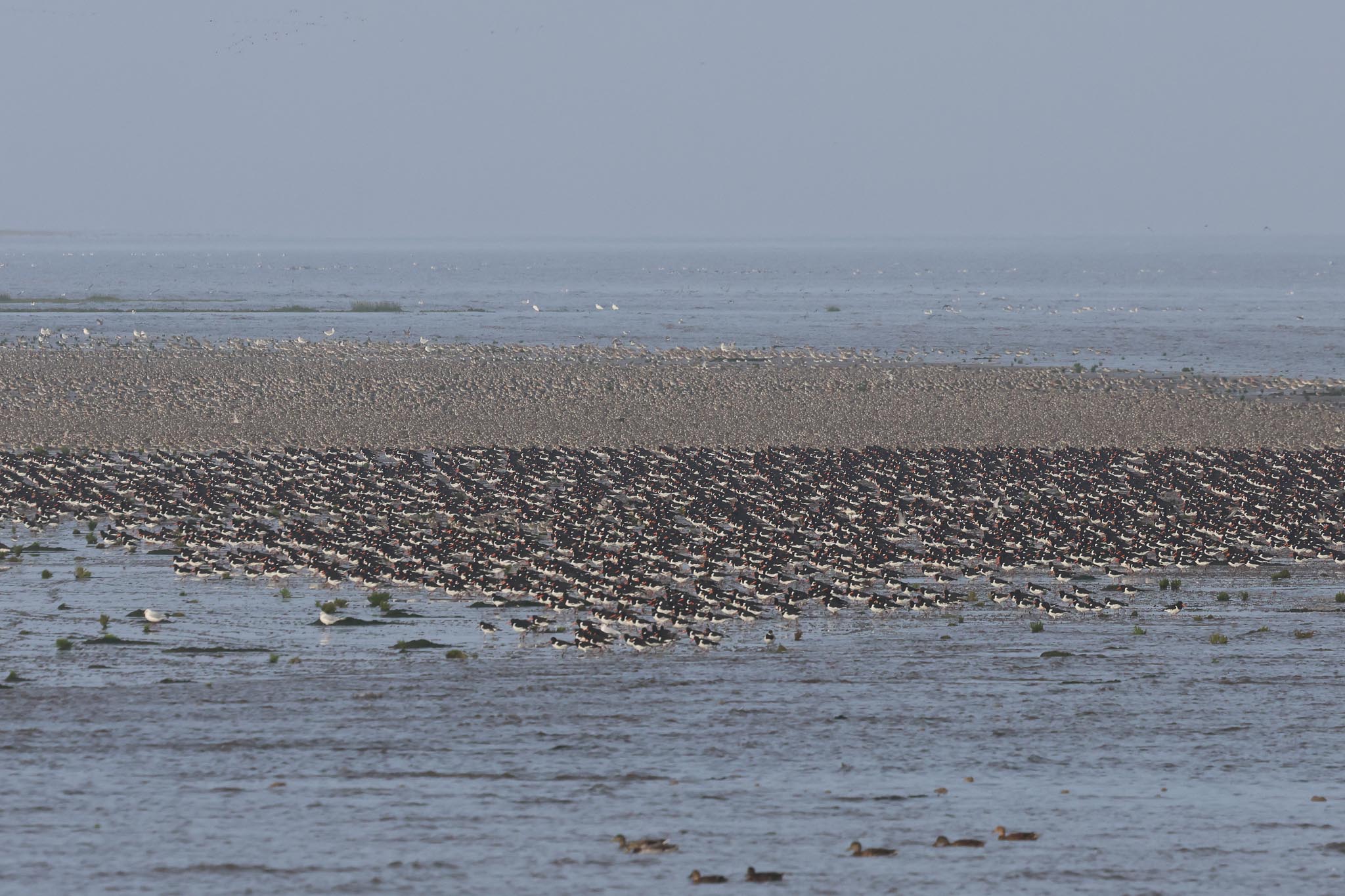
As we got to Rotary Hide, two Turtle Doves flew in past us and landed on the shore. They looked a bit non-plussed at the number of people gathered here today, but quickly settled down and fed quietly along the edge of the shingle. Great views.
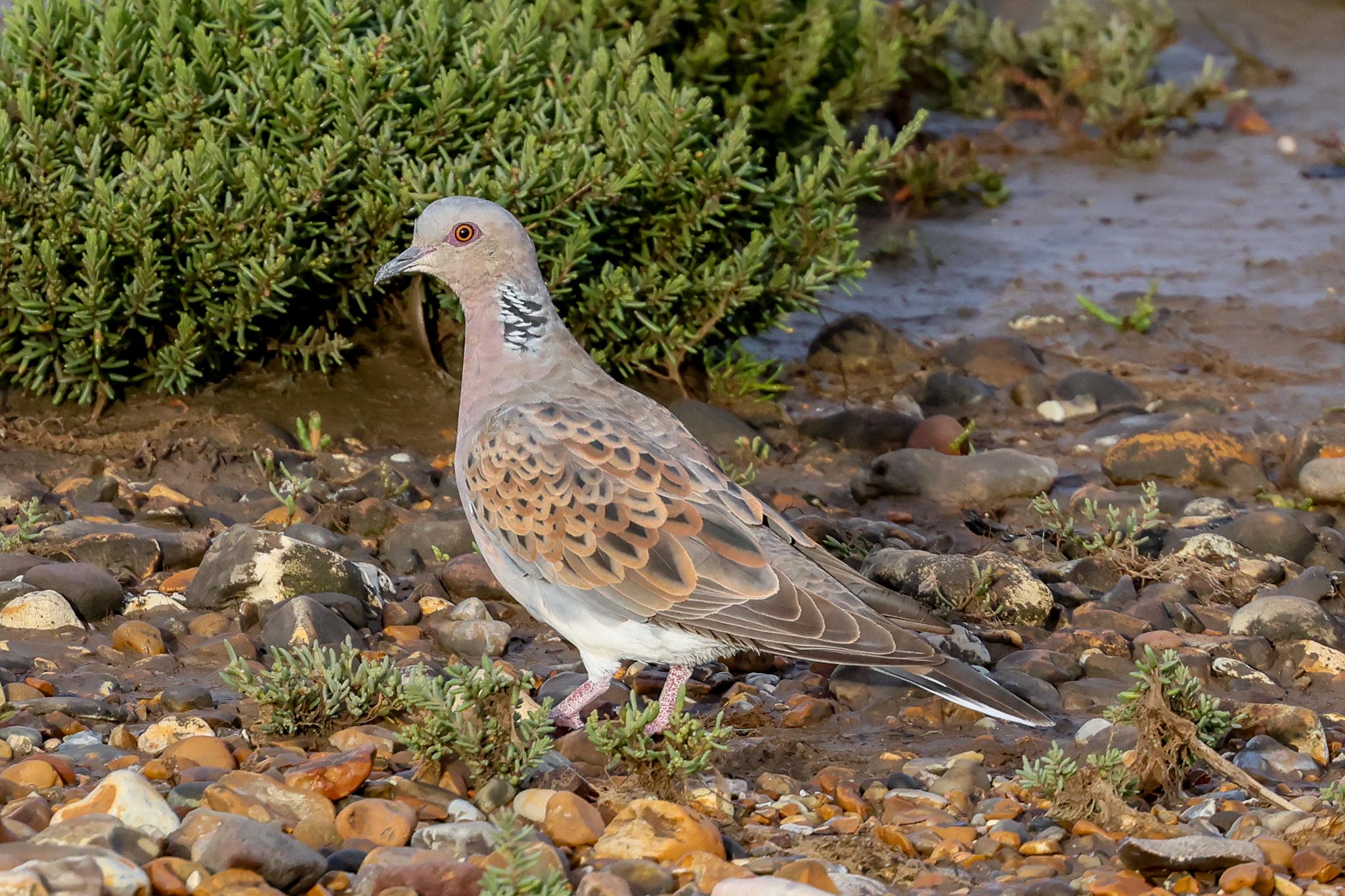
The waders were gradually being pressed in to the far corner, and after getting distracted by the Turtle Doves, we were only just arriving at the far end when all the Knot erupted again. They twisted and turned out over the water, climbing up into the sky, and then decided it was time to come in to the Pit to roost. We watched huge flocks of Knot circling over the Pit, a swirl dropping off the bottom edge and siphoning down onto the islands out of view, while others towered up into the sky, no room in the airspace above the Pit.
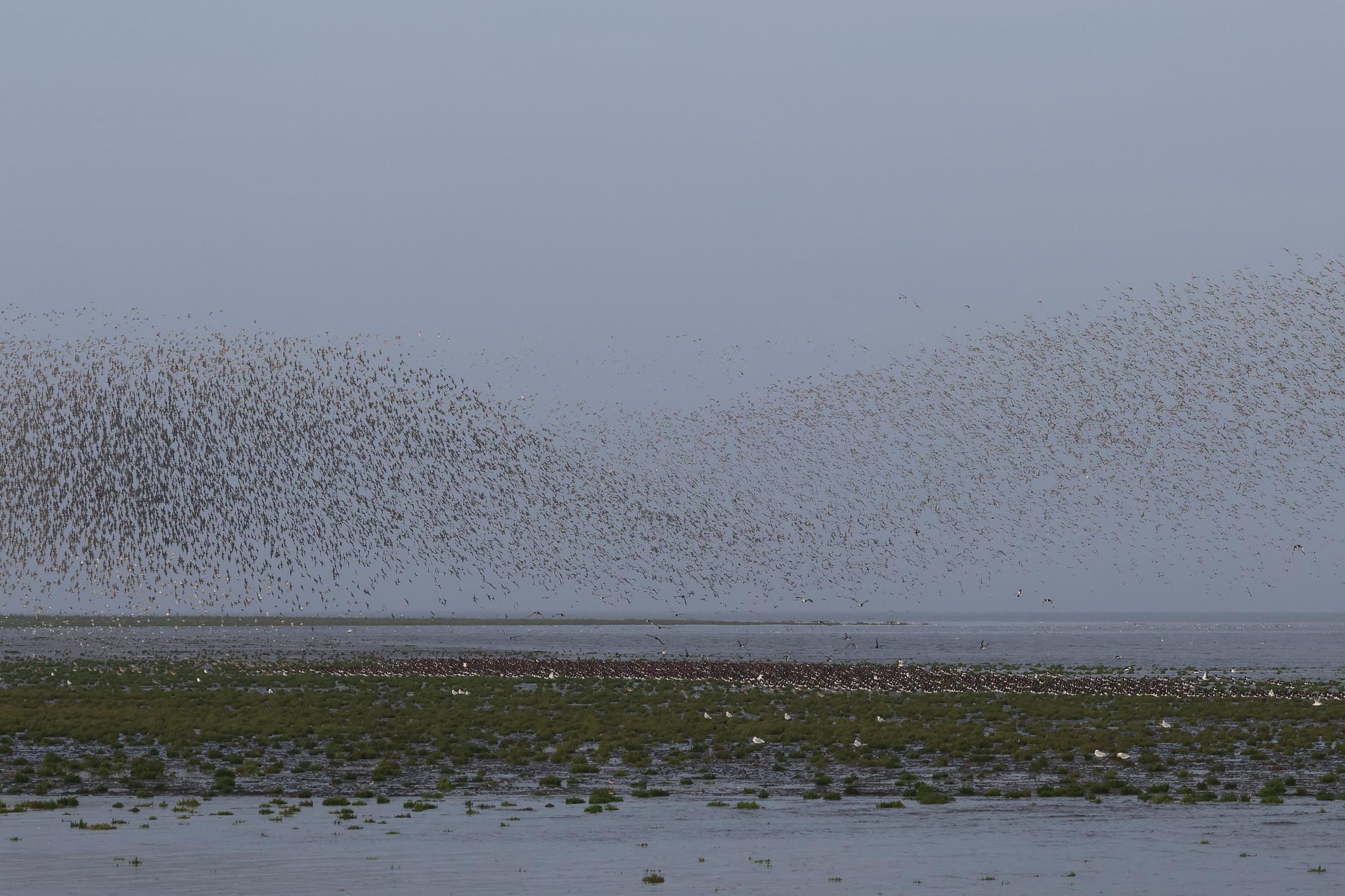

We then realised why they were all so nervous, when a juvenile Peregrine flew back past us, with a Dunlin in its talons.
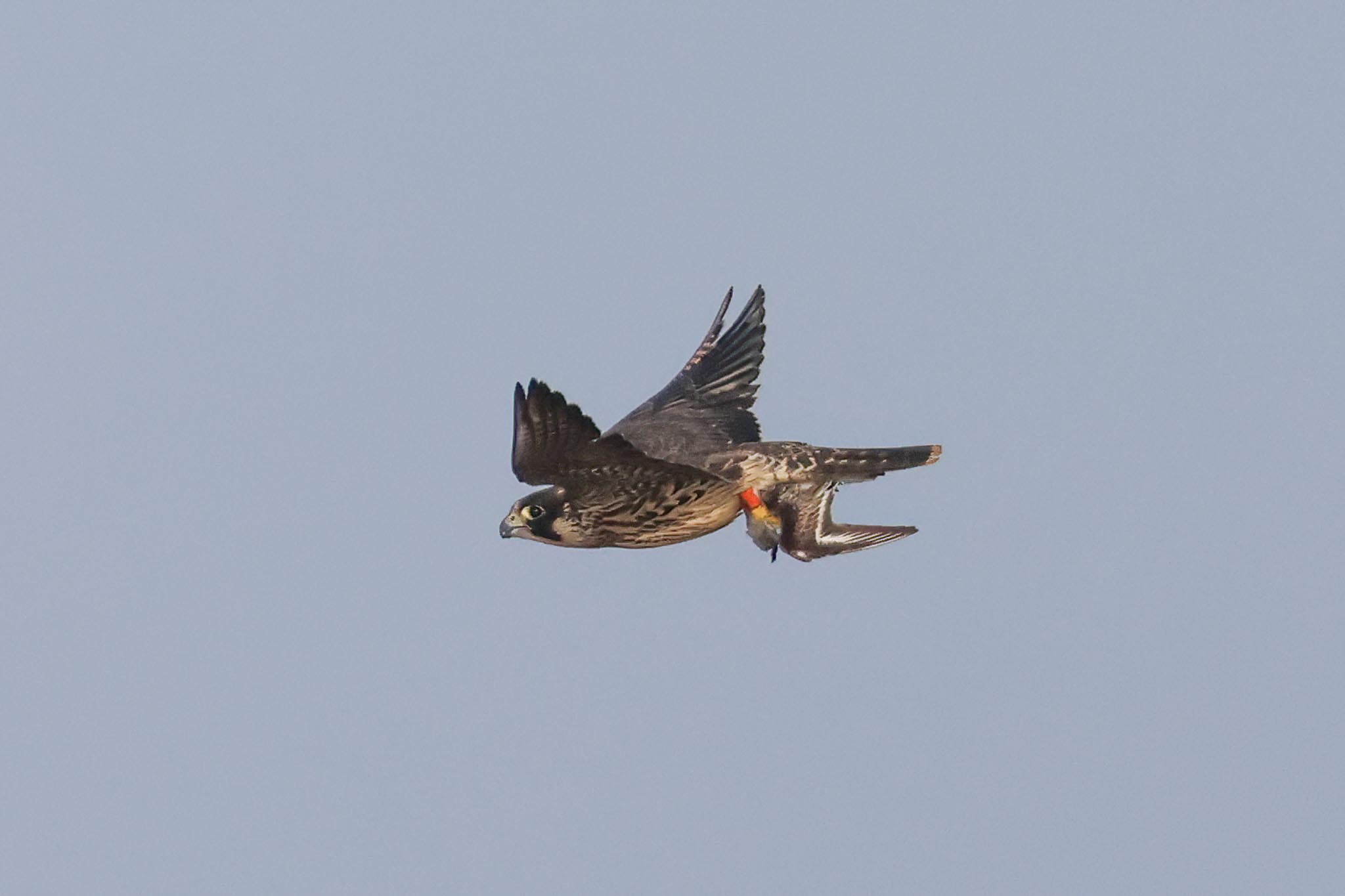
We took our eyes off the large flocks overhead, and thousands of Knot presumably headed off back out high over the Wash – there was no room for all of them on the islands today. It was the day of the WeBS (Wetland Bird Survey) counts, and we learnt from the warden later that there were an impressive 59,300 Knot counted here this morning. As all the other Knot disappeared, one was left behind, a lone bird which was feeding along the edge of the gravel right in front of the hordes of people and photographers just a few feet away. Safer here than out where the Peregrine was!
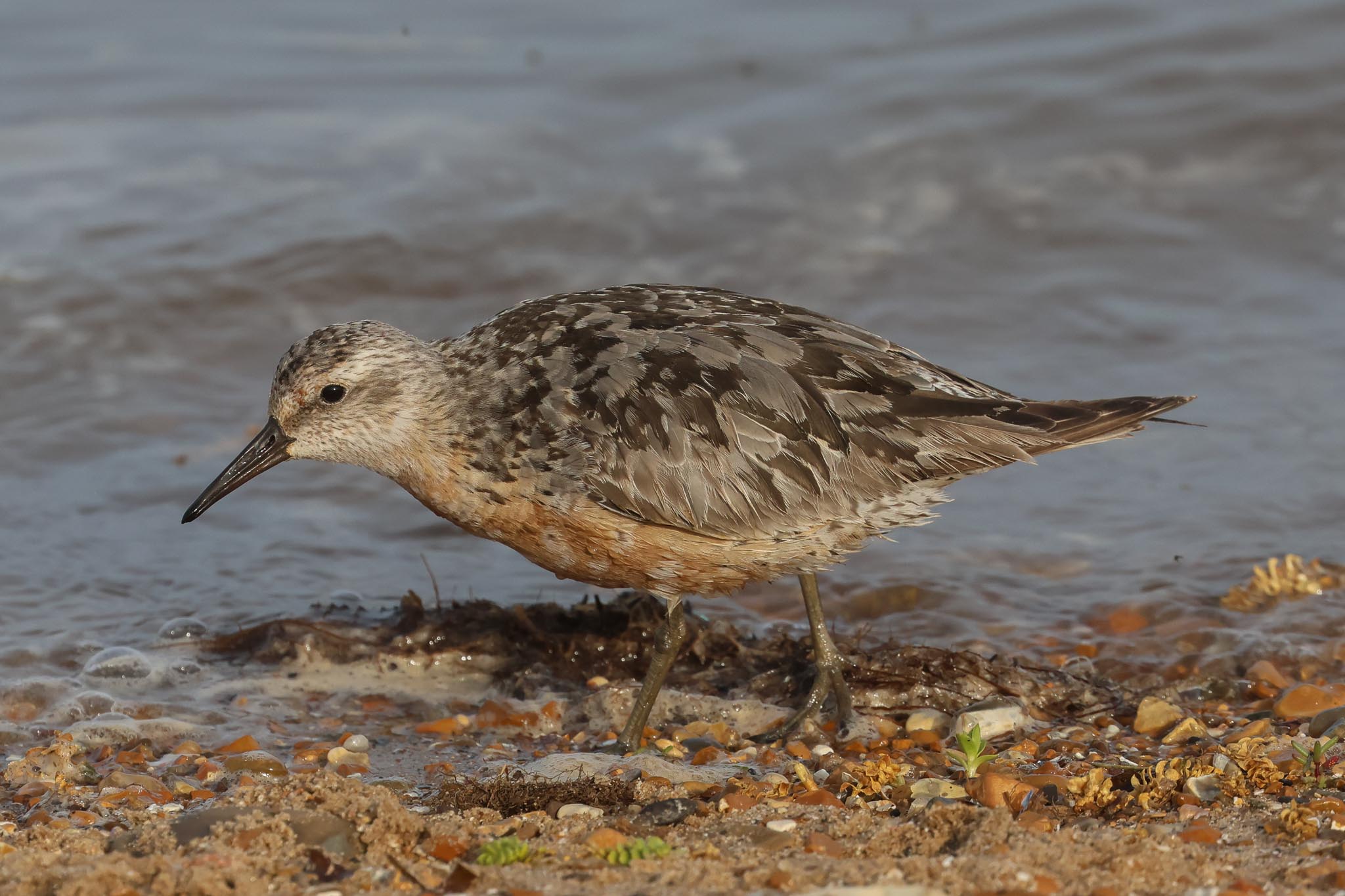
We stood for a while out on the edge of the Wash and waited for the initial rush for the hides to die down. A single Brent Goose appeared on the grass in among the photographers on the shore too – it didn’t look particularly well, but presumably it had survived the summer here and was now awaiting the return of the other Brents.
Then we made our way round to South Screen, where there was just enough room for us to squeeze in now. There were lots of waders roosting down at this end of the Pit, a huge mob of Oystercatchers on the shingle bank on one side (7,200 were counted here today!), and lots of Black-tailed Godwits around the islands with smaller numbers of Knot mixed in with them.
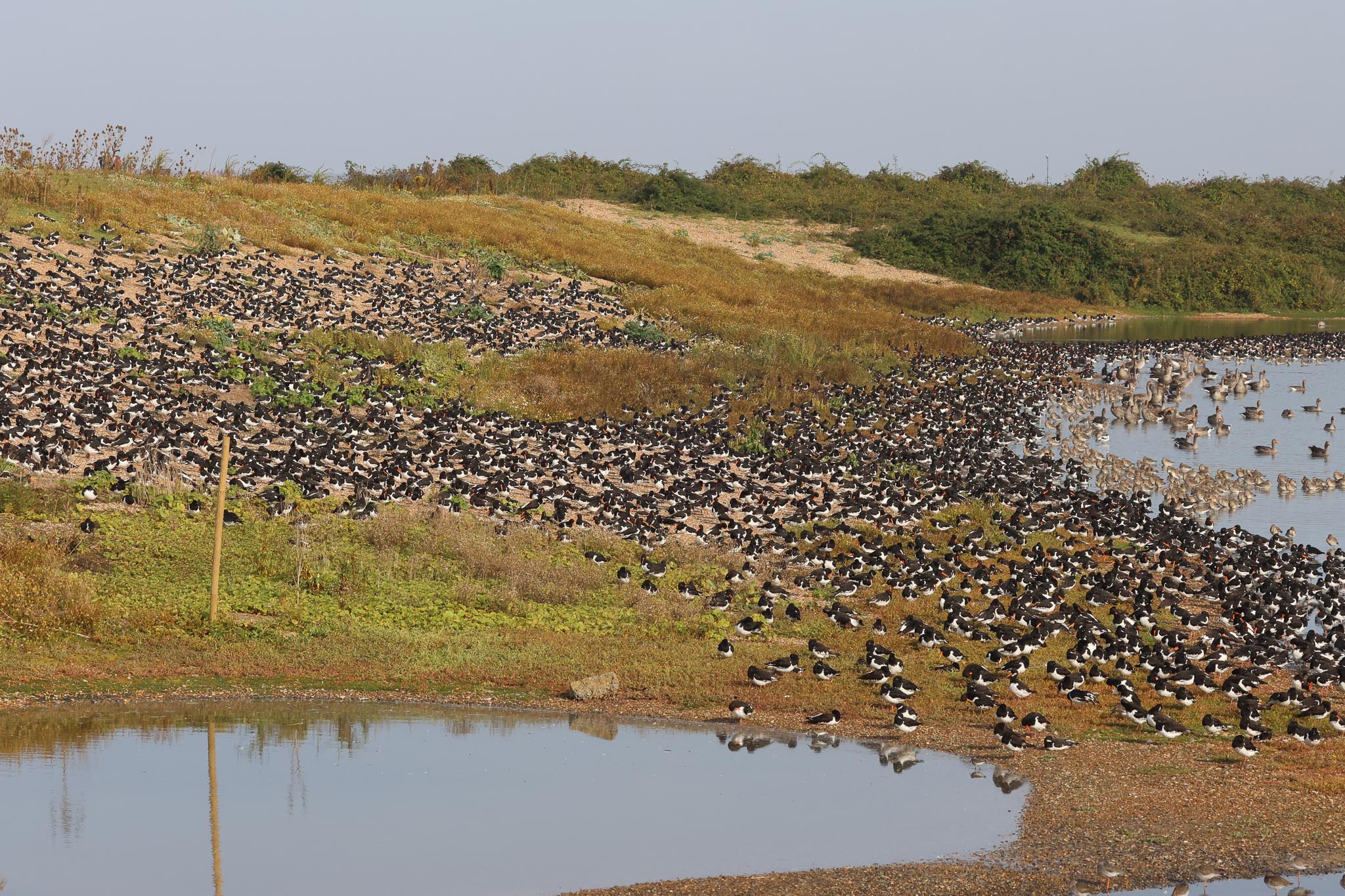
A juvenile Little Ringed Plover was down on the shingle in front of the hide and a couple of Common Sandpipers picked their way around the edges of the water below us. There were a couple of groups of Spoonbills further out on the Pit, ten sleeping out in the middle and another seven on the bank on the far side.
Moving on to Knots Landing, a phalanx of photographers had taken up residence on the floor looking through the brush windows, so we sat on the steps and looked out through the glass at all the waders squashed in sleeping on the islands in front. There were several Bar-tailed Godwits, mostly boldly marked juveniles, mixed in with the Black-tailed Godwits, Knot and Common Redshanks. A single Spotted Redshank was dozing on the edge of one of the rocky islands further back. A Little Stint was picking up and down along the edge of the water out to the right of the hide.
It was already an hour after high tide so we made our way back out and round to the edge of the Wash. On the way, we stopped to look at some Sea Aster Bees swarming around the bare earth where the rabbits had been excavating next to the path. We had a quick look in at Shore Hide, where several more Spotted Redshanks were roosting out in the middle with the Common Redshanks and the Knot were still packed on to the islands to the north. Then we positioned ourselves out on the edge of the water to wait for the Knot to come back out.
A couple of adult Common Terns were feeding up and down in front of us, occasionally pursued by one of their begging juveniles. Out over the Wash, we picked up an Arctic Skua circling in the distance, which then landed on the sea. The Oystercatchers started to come back out first, in a series of small groups, just as they had on the way in. Soon the Knot began to fly out too, in lines, coming up out of the Pit, over the bank, then dropping low and out over the water. One wave came right over our heads as they cut back out to where the mud was reappearing.
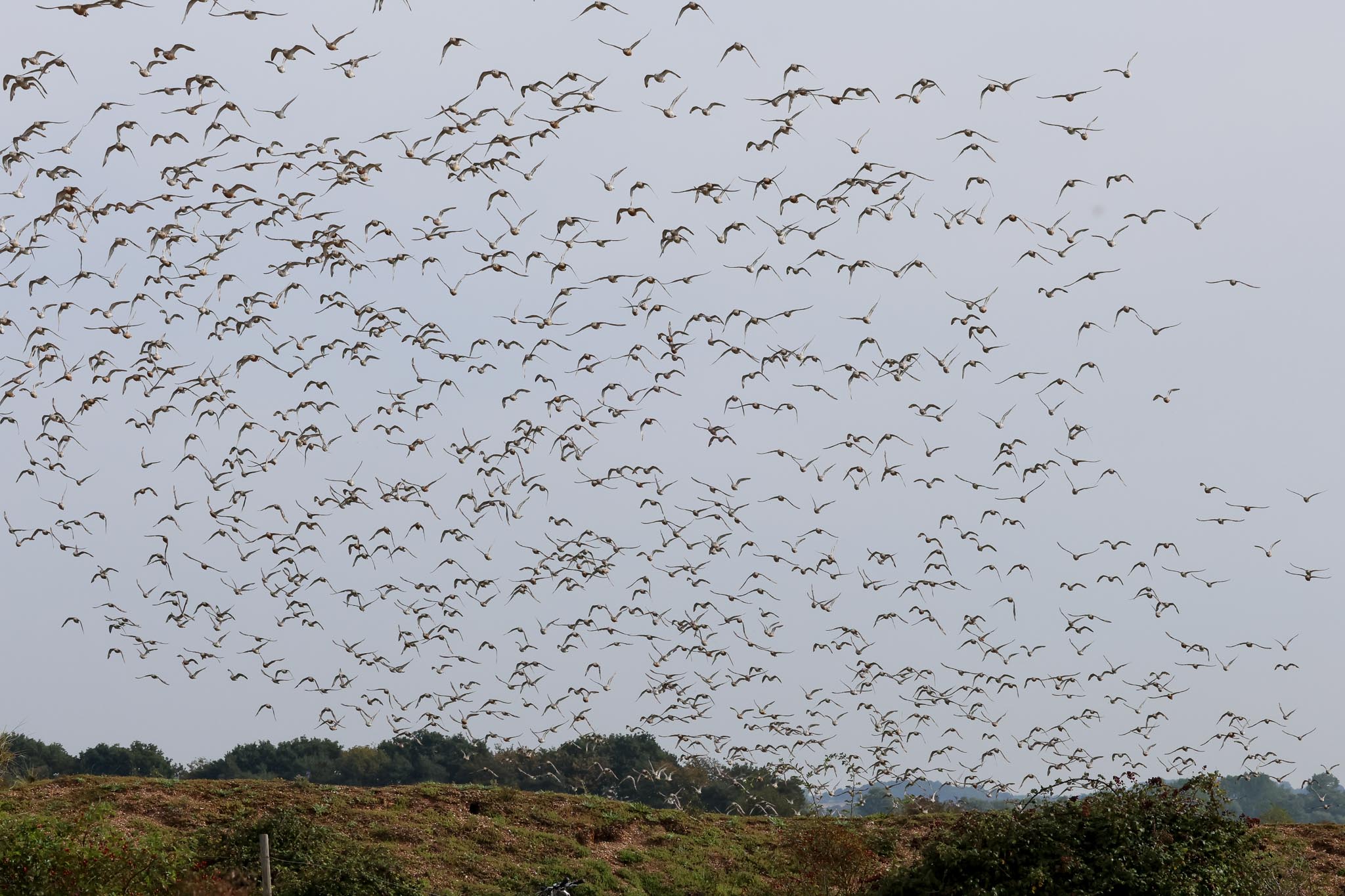
Eventually, the return of the Knot slowed and we decided it was time to head back. There were large numbers of silvery-white Sanderling gathered out on the mud further up, with smaller numbers of Ringed Plover and Turnstone on the shore – the smaller waders had not come in to the Pit but had roosted out here, along the beach. A Wheatear flitted round ahead of us, flashing its white rump, and landed on a post.
We drove round to Titchwell and had a break for lunch. Afterwards, we had a quick look out on the reserve. The American Golden Plover has been here for the last couple of weeks but is very erratic in its appearances. It had been reported here late morning today, so as it would be a new bird for the group we made a bee-line straight out to see it. It was in its usual place, on one of the islands out from Parrinder Hide, good views through the scope. It tends to keep its own company, but there were quite a few (European) Golden Plovers around it for comparison.
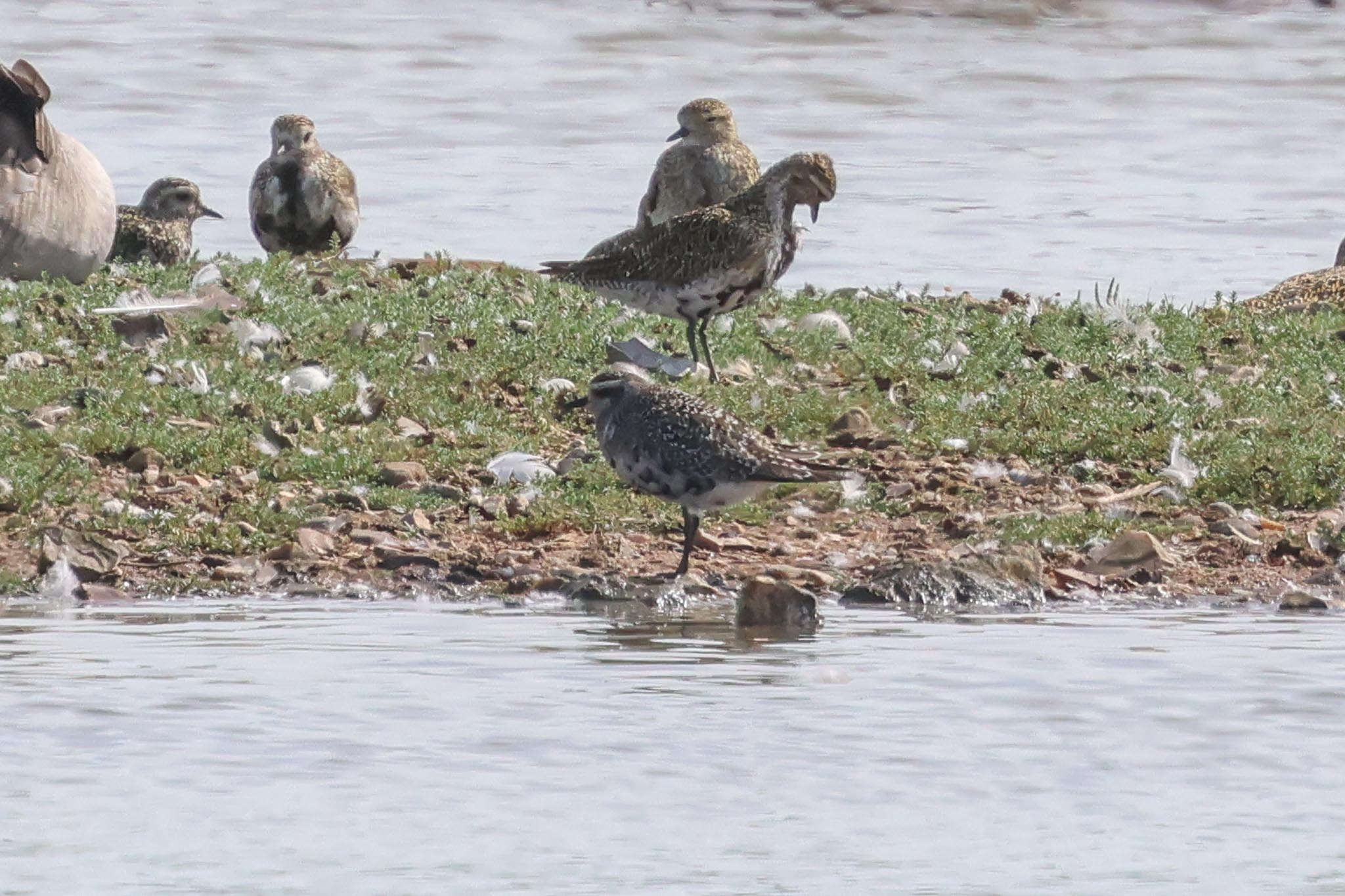
There were quite a few Spoonbills out on the Freshmarsh too – we counted 31 now, but there had apparently been as many as 53 earlier. Then we noticed a young large gull on the next compartment over which looked interesting. Through the scope, we could see it was a juvenile Caspian Gull (moulting into its 1st winter), a nice bonus. We had a good look at it before it took off and flew over the hide, disappeared off in the direction of the beach.
We decided to head out to the beach. We stopped on the way to look at a couple of the Wasp Spiders on their webs on the bank – impressive beasts! There wasn’t much of note on the Volunteer Marsh or Tidal Pools, and there had probably been too much disturbance on the mussel beds in the sunshine so there were not so many waders on here today. Three more Spoonbills flew past.
We scanned the sea from the edge of the dunes. There had been one or two Red-necked Grebes out here earlier, but we couldn’t see it at first. We found a few Great Crested Grebes and a few Razorbills. One of the RSPB volunteers was out here looking too, and just after we found a Red-necked Grebe off to the right, he found the other one to the left. His was easier to see, both smart adults in breeding plumage, distant, but their red necks catching the sun as they turned.
Then it was time to head back. A Spectacular day in the sunshine.
















